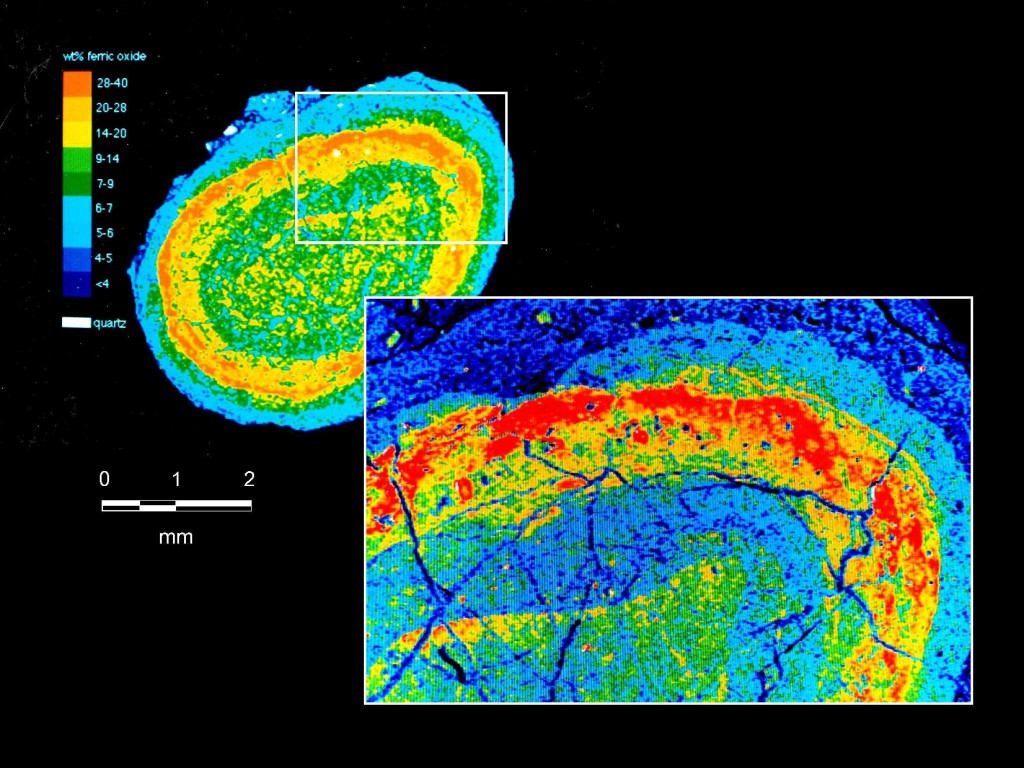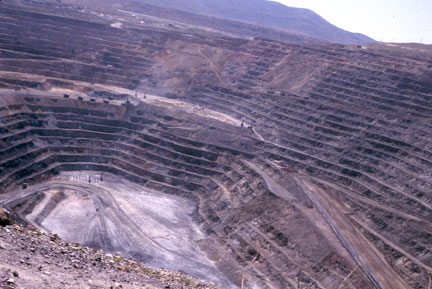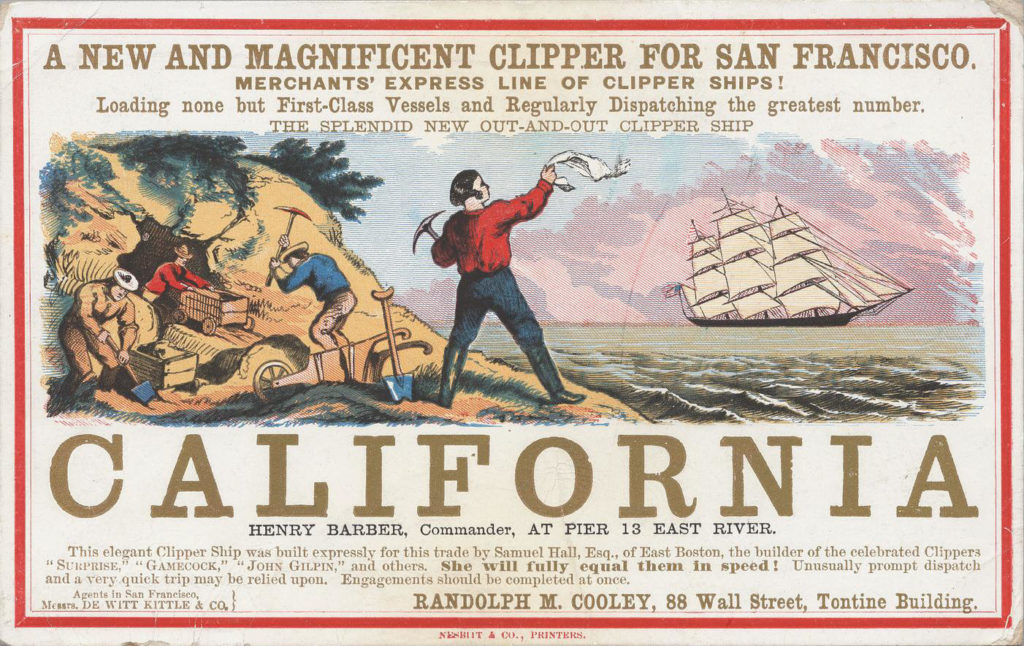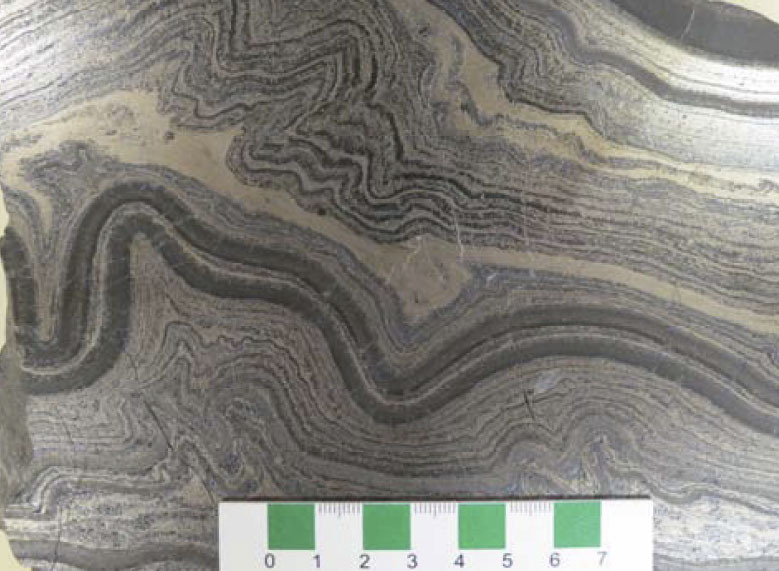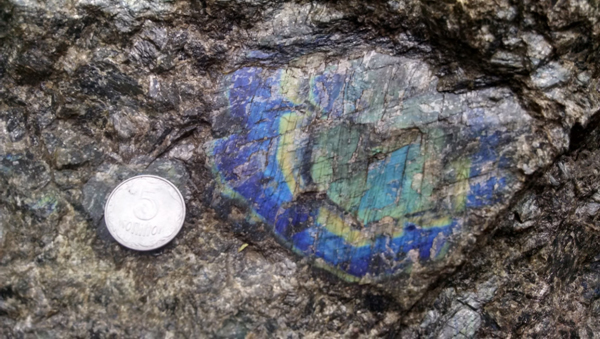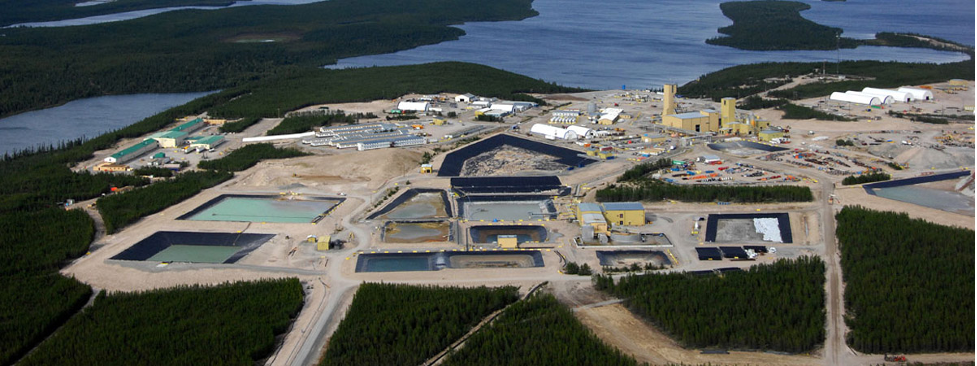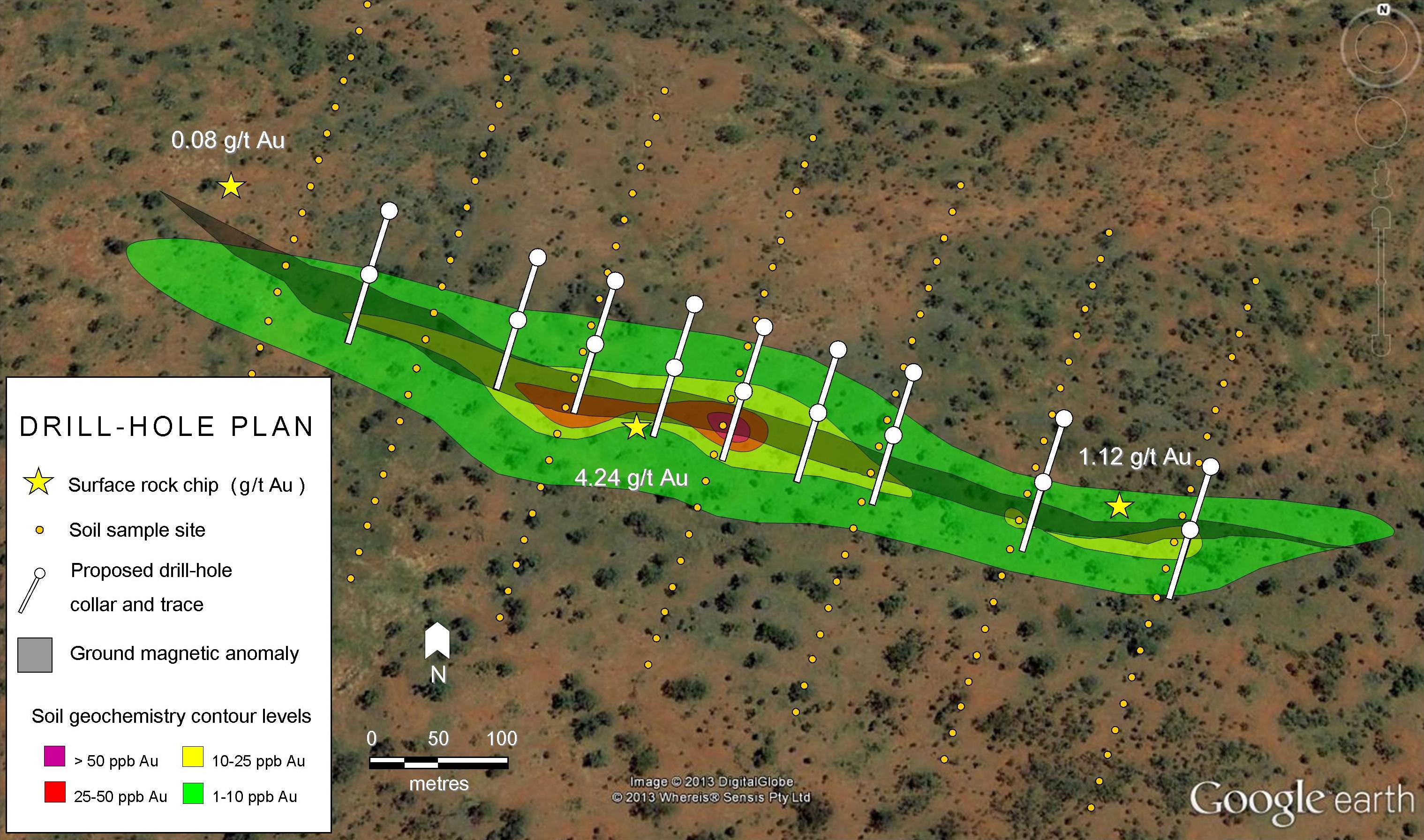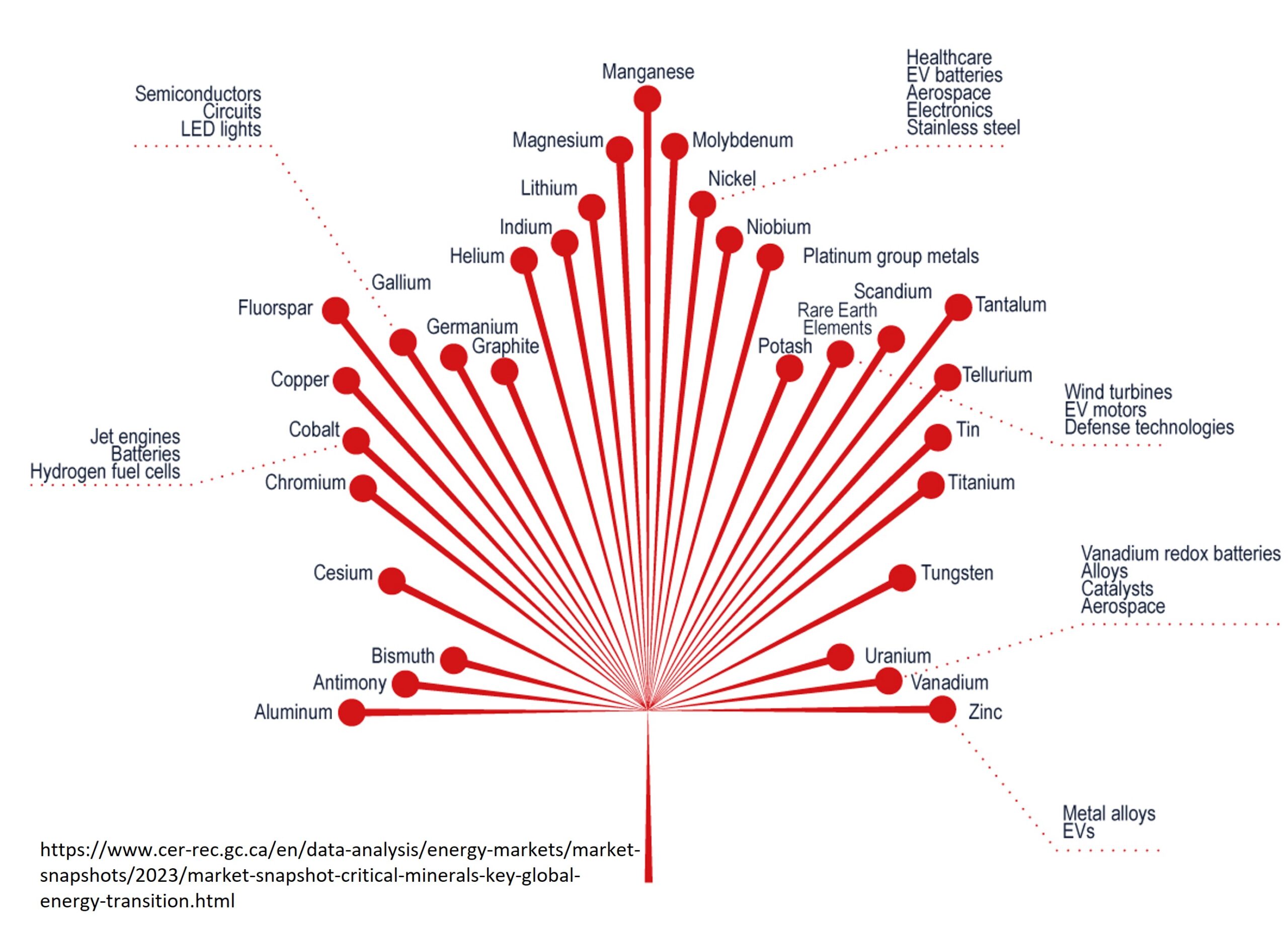Iron oxide-copper-gold or IOCG deposits can be of tremendous size. The largest known deposit of this type is Olympic Dam, located 560 kilometres north of Adelaide, South Australia. Olympic Dam is Australia’s largest underground mine. In 2012, plans to expand the mine into an enormous open pit were put on hold. If the expansion had gone ahead, Olympic Dam would’ve become the world’s largest open-cut mine. After 40 years of mining, the size of the pit was planned to be 4.1 km long, 3.5 km wide and 1 km deep.
There are similarities between the Australian IOCG deposits and those in Wernecke in the Yukon Territory, Canada
BHP Billiton, the owner and operator of Olympic Dam, claims that the site is the world’s largest multi-mineral deposit, valued at around US$ 1,000 billion. The total resources exceed 9 billion tonnes of ore, containing an average grade of 0.8 % copper, 280 ppm uranium oxide, 0.76 g/t gold and 3.95 g/t silver. This massive ore body also holds the title of hosting the world’s largest known deposit of uranium.
The IOCG deposits of South Australia including Olympic Dam, Prominent Hill, Carrapateena and Hillside, are all located along the margin of a piece of very old crustal rocks called the Gawler Craton. Australia’s other IOCG deposits, Ernest Henry and Mount Elliot, are located some 1900km north in the Cloncurry district of northern Queensland.
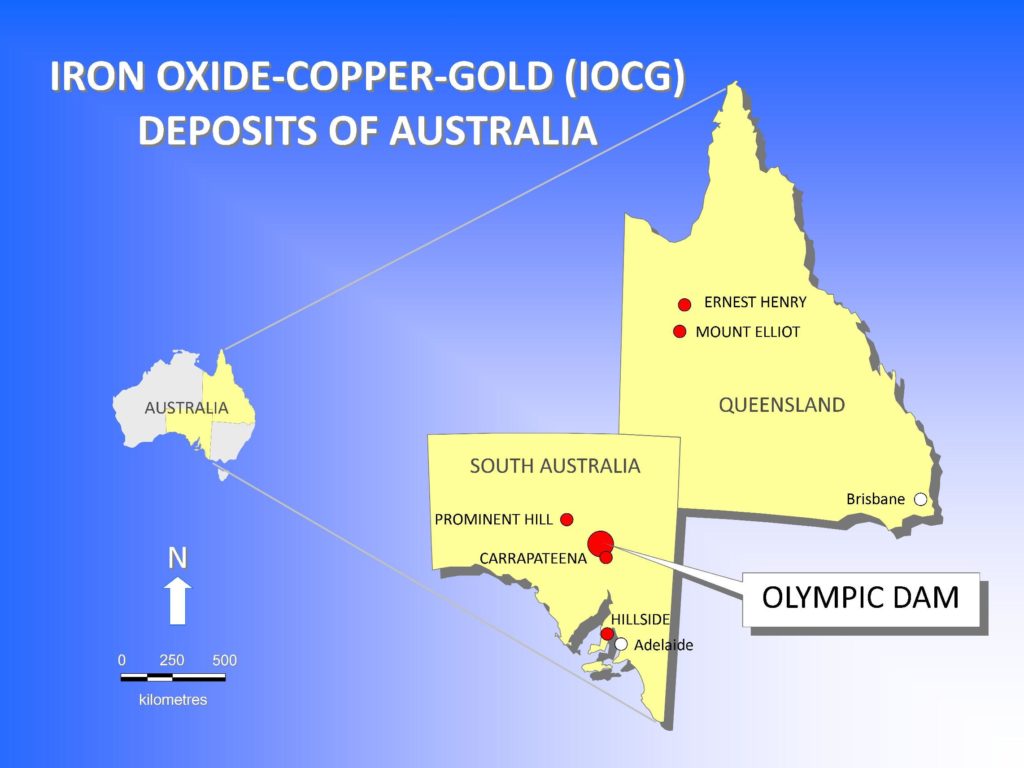
There are similarities between the Australian IOCG deposits and those in Wernecke in the Yukon Territory, Canada. The similar time of formation and style of mineralisation suggests that these two areas were once adjacent. Subsequent movement of the crustal plates over billions of years has separated the two areas.
Description of IOCG Deposits
IOCG deposits may be conical, pipe-like or sheet-like orebodies consisting of extensively broken or brecciated rock with quartz veining. They are often associated with major episodes of igneous activity. These deposits contain more iron-oxide minerals, such as hematite, than iron-sulphide minerals, such as pyrite. This is rather unusual for hydrothermal deposits. Large IOCG deposits form from hydrothermal alteration systems of up to hundreds of kilometres in size operating along large crustal structures.
The South Australian deposits have undergone a particular style of alteration called hematite-sericite alteration. Hematite is the main iron oxide mineral present together with a white flaky mica mineral, called sericite. Feldspars within the deposits are altered to be potassium-rich.
The ages of IOCG deposits range from extremely old, i.e. 1.8 billion years old to relatively young at only 15 million years old. However, most are older than 850 million years old.
In addition to copper, gold, uranium and silver, IOCG deposits can contain other valuable elements such as bismuth and rare earth elements. There are two main types of IOCGs, hematite-facies, typically mined for copper, gold, and uranium, and magnetite-facies, which may contain a more diverse set of metals such as cobalt and bismuth. Olympic Dam, and most other Australian IOCGs, are hematite-facies deposits.
In recent years researchers have linked IOCGs to a suite of related Metasomatic-Iron-Oxide-Calcic (MIAC) deposit types such as Iron Oxide Apatite (IOA), albitite uranium, and 5-element vein deposits.
Their large size and high volume of iron minerals contained within IOCG deposits can make them detectable by regional gravity surveys. The presence of a high gravity region indicates the presence of something large and dense sub-surface. The edges of these gravity highs are are usually the initial targets for exploration drilling.
Typically, IOCG deposits are prospected for their concentrations of copper. In the deepest parts of the deposit, the main copper mineral disseminated within the brecciated rock and locally concentrated in veins is chalcopyrite, a copper iron sulphide. Higher up in the deposit the mineral bornite, also a copper iron sulphide mineral, is more common. In association with these copper minerals is the iron sulphide mineral pyrite.
Enrichment of copper minerals can occur at the top of IOCG deposits. This type of alteration is known as supergene enrichment zone where the copper minerals malachite, cuprite, native copper, digenite and chalcocite predominant.
IOCG deposits which are high in the iron minerals magnetite and hematite, can become economic iron ore deposits.
Gold concentrations are typically low in IOCG deposits, i.e. usually less than 1.0 g/t gold. However, the enormous volume of these deposits can make the gold resources correspondingly large.
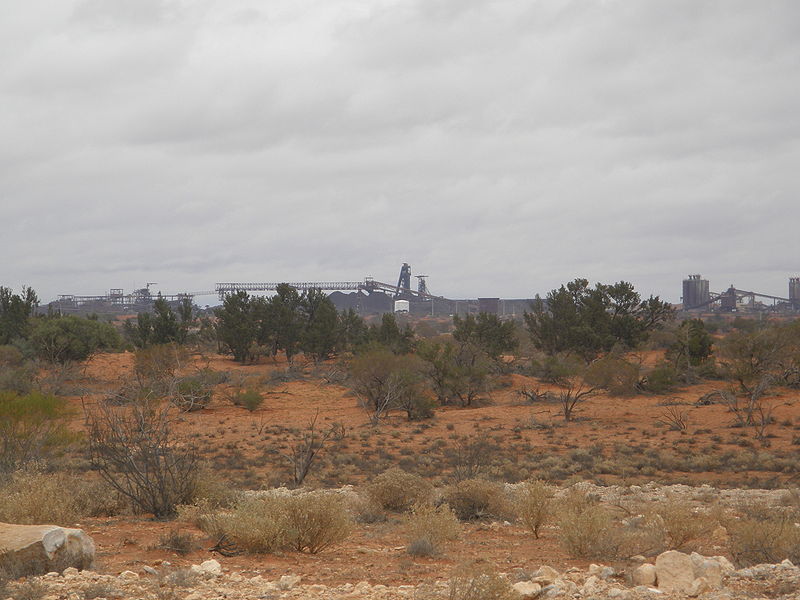
Formation of IOCG Deposits in Australia
The IOCG deposits of Australia are ~1.55-1.6 billion years old and were formed during the Proterozoic era of the Precambrian period. They were formed by large scale hydrothermal alteration along deep seated faults and other structures within the earth’s crust. Super-heated fluids released by the Hiltaba Suite granites in South Australia were responsible for brecciation, alteration and mineralisation of the rock.
Companies Mentioned
- BHP Billiton Ltd – owner of Olympic Dam, South Australia
- Rex Minerals Ltd – owner of Hillside, South Australia
- Evolution mining– owner of Ernest Henry, Queensland: https://evolutionmining.com.au/ (website)
- Chinova– owner of Mount Elliot, Queensland: https://www.chinovaresources.com (website)
Subscribe for Email Updates

